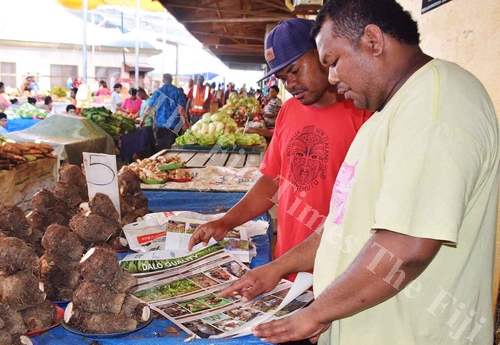FIJI produces about 52,000 tonnes of dalo annually with the value of the industry standing at $120 million.
This was revealed by the Ministry of Agriculture in a new manual launched this week in Navatukia Village in Serea, Sawani.
The Fiji Dalo Quality Manual, developed by the ministry in collaboration with industry stakeholders including growers and traders, and the Pacific Horticultural and Agricultural Market Access (PHAMA) Program, an Australian Government initiative co-funded by the New Zealand Government, provides a way forward to improving the quality and exports of taro (locally known as dalo) from Fiji.
A statement from PHAMA yesterday said given the importance of dalo to rural and urban communities alike, it was a concern that exports of premium quality dalo had been declining.
It said while this was partly attributable to the two cyclones and prolonged drought that had affected Fiji, solutions needed to be identified to increase volumes and quality of export products.
According to PHAMA the Fiji Dalo Quality Manual is among the recommended solutions that have the potential to improve exports of premium taro.
It believes that with increasing competition in dalo export markets from other countries in the Pacific and beyond, New Zealand and Australia have very stringent import conditions which mean they will only accept dalo that is of high quality and has been processed appropriately.
It said for these reasons it was increasingly important that there was a focus on delivering high quality dalo by all those involved in taro production and export.
The manual is meant to help dalo growers, buyers and exporters improve the quality of dalo being produced and traded for the local and export markets.
According to the statement a workshop was held in the interior of Naitasiri in recognition of the many hardworking farmers and communities producing dalo in the area for the local and exports markets.
It said nearly 130 dalo growers from across the main taro-producing areas including Kadavu and Gau, the interior of Ra, Taveuni and the interior of Tailevu also participated in the workshop. Meanwhile the manual aims to ensure that taro grown in Fiji is:
– Produced, harvested and processed according to good handling standards to maintain its quality;
– Safe and healthy to consume; and
– Locally and internationally renowned and recognised as a quality product; and complies with the biosecurity, quality and other requirements of target export markets.
The Fiji Dalo Quality Manual contains clear and up-to-date information and images on how to grow a premium taro product and maintain its quality from farm to consumer.
The manual also includes a detailed description of Fijian taro varieties for export and important local varieties; noting that conservation of local varieties such as vavai dina, dalo ni toga and vavai loa is crucial to the future of traditional root crops and part of ensuring food security.




